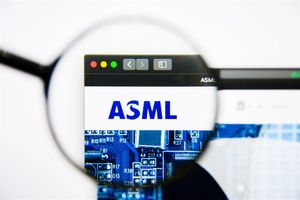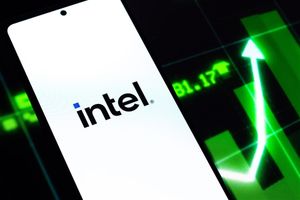
As of October 2025, the financial markets are gripped by a pervasive and intensifying debate: are we witnessing the formation of an AI-driven stock market bubble? This question is not merely academic; it's prompting a critical re-evaluation of investment strategies, with a significant focus on whether investors should consider the seemingly conservative approach of hoarding cash. A blend of fervent optimism about artificial intelligence's transformative potential and growing apprehension over soaring valuations has created a volatile and uncertain landscape for market participants.
The current market sentiment, characterized by both aggressive investment in AI-related stocks and increasing caution, places investors at a crossroads. While the allure of continued gains from the AI boom is undeniable, the specter of a significant market correction looms large, forcing a difficult choice between capitalizing on potential upside and protecting against substantial downside risk.
The AI Gold Rush: A Market Overheating?
The speculation surrounding an "AI bubble" has reached a fever pitch, with a significant portion of the global financial community believing the market is either in or on the cusp of an AI-driven speculative phase. This concern isn't unfounded; an October 2025 poll by Bank of America Corp. (NYSE: BAC) revealed that a record 54% of global fund managers now consider AI stocks to be in a bubble, identifying it as the foremost "tail risk" globally. This figure represents a sharp increase from previous months, signaling escalating anxiety among institutional investors. Another contemporary survey echoed this sentiment, with 33% of global fund managers pinpointing an "AI equity bubble" as the primary global risk.
This growing apprehension is fueled by several factors, including the perceived overvaluation of AI-related companies. The S&P 500's forward price-to-earnings ratio has climbed to 23, and the Shiller price-to-earnings (CAPE) ratio has surged past 40 – a level not witnessed since the infamous dot-com crash, placing the market firmly in what many analysts describe as a "danger zone." Institutions like the Bank of England and the International Monetary Fund (IMF) have openly described trading in AI companies as "overheated," warning of an increased risk of a global market correction. Prominent figures are also adding their voices to the chorus of caution; JPMorgan Chase (NYSE: JPM) CEO Jamie Dimon has expressed concerns about "elevated asset prices" and has predicted a "serious market correction" within the next six months to two years. Similarly, Ray Dalio of Bridgewater Associates noted in early 2025 that current AI investment levels bear a "very similar" resemblance to the dot-com bubble. Even OpenAI CEO Sam Altman conceded in August 2025 that AI constitutes a bubble, cautioning investors that "someone's gonna get burned" due to "overexcited" sentiment.
These warnings often draw parallels to the internet bubble of the late 1990s and early 2000s, particularly regarding the disproportionate market influence of a few dominant technology companies, often dubbed the "Magnificent Seven." These five companies now command 20% of the MSCI World Index, a concentration double that observed during the dot-com era, raising concerns about systemic risk should these market leaders falter. The Cboe Volatility Index (VIX) has also seen a surge in October 2025, reflecting heightened market anxiety, further exacerbated by renewed worries about a potential US-China trade war.
The Contenders: Who Wins, Who Loses?
In a potential AI bubble scenario, the landscape of winners and losers is complex and multifaceted. The immediate beneficiaries of the AI boom have been the technology giants and chipmakers at the forefront of AI development and infrastructure. Companies like NVIDIA Corporation (NASDAQ: NVDA), a leader in AI chips, Microsoft Corporation (NASDAQ: MSFT) with its significant investment in OpenAI, Alphabet Inc. (NASDAQ: GOOGL) (NASDAQ: GOOG) with its AI research and applications, and Amazon.com Inc. (NASDAQ: AMZN) through AWS's AI services, have seen their valuations soar. These companies boast robust earnings, substantial cash reserves, and proven business models, which proponents argue differentiate them from the speculative startups of the dot-com era. Their continued investment in AI data centers and infrastructure is currently a significant driver of US economic growth, accounting for nearly 40% of the last quarter's real GDP growth from tech capital expenditure.
However, the risk of a bubble burst could severely impact these high-flying stocks, leading to significant corrections. While their underlying businesses are strong, their current valuations may already price in years of future growth, leaving little room for error or disappointment. Smaller, less established AI startups, especially those with unproven revenue models or relying heavily on venture capital funding, would be particularly vulnerable. These companies could face a significant tightening of capital and a re-evaluation of their long-term viability, potentially leading to widespread failures and consolidation within the sector.
On the other hand, traditional industries and companies that have been slow to adopt AI or are not directly involved in its development might initially seem insulated from an AI bubble. However, they could suffer from broader market contagion if a tech-led correction triggers a wider economic downturn. Conversely, companies that judiciously integrate AI into their existing operations for efficiency and innovation, without incurring speculative valuations, might emerge as long-term winners. These "AI adopters" rather than "AI creators" could realize sustainable productivity gains. Additionally, defensive sectors and companies with strong balance sheets and consistent dividends might be seen as safe havens during a downturn, potentially attracting capital from investors seeking stability.
Broader Implications and Historical Echoes
The current AI bubble speculation fits into a broader trend of technological disruption and market exuberance that has characterized various historical periods. The most immediate and frequently cited parallel is the dot-com bubble of the late 1990s, where speculative investments in internet companies led to inflated valuations, followed by a dramatic crash. Similar to that era, the current market exhibits high concentration risk, with the "Magnificent Seven" contributing nearly half of the S&P 500's gains. This level of concentration increases systemic risk, as the underperformance of a few key players can have an outsized impact on the entire market.
Beyond historical precedents, the potential AI bubble has significant ripple effects. Competitors and partners in the tech ecosystem are closely watching, with many scrambling to accelerate their own AI initiatives to avoid being left behind. This competitive pressure can lead to increased R&D spending, aggressive M&A activities, and a race for AI talent, all of which can further inflate valuations or strain resources. Regulatory bodies worldwide are also beginning to scrutinize the AI sector, particularly concerning data privacy, ethical AI development, market dominance, and potential anti-competitive practices. Should a bubble burst, it could trigger calls for stricter oversight and regulation, fundamentally altering the operating environment for AI companies.
However, some strategists, including those from Goldman Sachs (NYSE: GS), contend that it is premature to fear a tech bubble. They argue that, unlike the dot-com era's often unprofitable startups, today's AI leaders are generally profitable, cash-rich businesses demonstrating solid earnings growth. They also highlight the pervasive integration of AI across diverse industries and the immediate, tangible productivity gains being realized. This perspective suggests that the current growth is driven by fundamental value creation, not just speculation, and that AI's transformative power might justify higher valuations.
The Road Ahead: Navigating the AI Frontier
Looking ahead, the market faces several potential scenarios. In the short term, the "fear of missing out" (FOMO) could continue to drive the AI rally, pushing valuations even higher despite underlying concerns. This could lead to a protracted period of irrational exuberance before any significant correction. Alternatively, a catalyst such Bas unexpected economic slowdown, geopolitical tensions (like renewed US-China trade war worries), or disappointing earnings from key AI players could trigger a sharp downturn, leading to a significant market correction.
In the long term, the trajectory of the AI revolution will likely determine the ultimate outcome. If AI proves to be as profoundly transformative as its proponents suggest, driving unprecedented productivity gains and creating entirely new industries, then the current valuations, while high, might eventually be justified by sustained earnings growth. This would necessitate strategic pivots from companies, focusing on real-world applications and ethical deployment of AI. Market opportunities would emerge in sectors that successfully integrate AI to enhance efficiency, customer experience, or product innovation.
However, if the AI hype outpaces actual technological advancements or widespread adoption, a more severe and prolonged downturn is possible. This would challenge investors to discern genuine innovation from speculative ventures. Companies would need to adapt by demonstrating clear pathways to profitability and tangible benefits from their AI investments. Investors should watch for several key indicators in the coming months: the earnings reports of leading AI companies, any shifts in central bank monetary policy, the evolution of regulatory frameworks for AI, and broader macroeconomic trends that could impact market liquidity and investor sentiment. The ongoing debate between fundamental value and speculative fervor will define the market's journey through the AI frontier.
Conclusion: A Prudent Path Amidst Uncertainty
In summary, the financial markets in October 2025 are caught in a tension between the immense promise of artificial intelligence and the palpable fear of an impending speculative bubble. While the transformative potential of AI is undeniable, the rapid ascent of AI-related stock valuations, coupled with historical parallels to past bubbles, has created an environment of significant uncertainty. Prominent financial institutions and industry leaders are sounding alarms, citing elevated asset prices and an "overheated" market, leading many to question the sustainability of the current rally.
For investors, this complex landscape necessitates a careful and considered approach. The strategy of hoarding cash, while offering capital preservation and protection against a potential downturn, carries the risk of missing out on further gains if the AI boom continues. Conversely, remaining fully invested in high-flying AI stocks, while potentially yielding substantial returns, exposes investors to significant risk in the event of a market correction. The decision ultimately boils down to an individual's risk tolerance, investment horizon, and conviction in AI's long-term value creation versus its current speculative component.
Moving forward, investors should remain vigilant, closely monitoring corporate earnings, macroeconomic indicators, and the evolving regulatory environment surrounding AI. A diversified portfolio, a clear understanding of investment objectives, and a willingness to adapt strategies based on new information will be crucial. The coming months will likely reveal whether the AI revolution is building a sustainable future or if the market is merely inflating another bubble, destined to burst.
This content is intended for informational purposes only and is not financial advice






